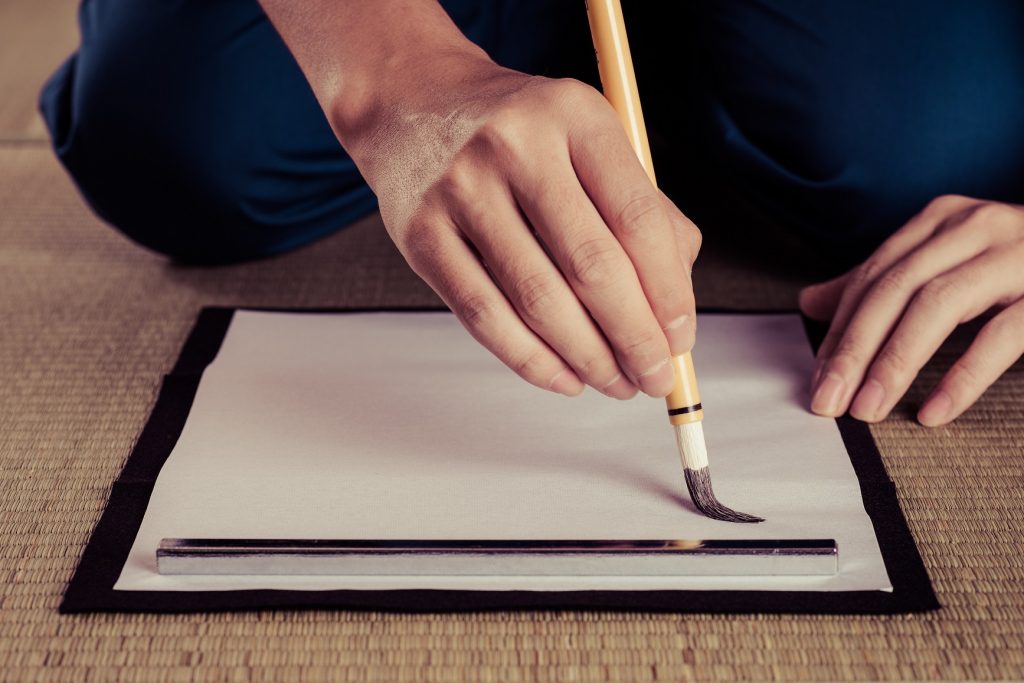Deep within the intricate tapestry of Japanese culture lies a form of artistic expression that transcends mere words – calligraphy, known as “shodo.” With each stroke of the brush, calligraphy becomes a dance of ink and paper, a timeless tradition that speaks volumes about the values, aesthetics, and philosophy of Japan. This art form not only preserves the beauty of the written word but also reflects the soul of the calligrapher and the essence of the culture itself.
A Brush with History
Calligraphy has been an integral part of Japanese culture for centuries. Its origins trace back to China, where it was initially practiced as a means of communication and record-keeping. Over time, calligraphy transcended its practical origins and evolved into a revered art form that blended visual aesthetics with the written word. As calligraphy travelled from China to Japan, it underwent its own transformation, embracing the nuances of Japanese culture and aesthetics.
The Aesthetics of Calligraphy
At the heart of Japanese calligraphy lies the pursuit of beauty, balance, and harmony. The calligrapher’s brush becomes an extension of their thoughts and emotions, allowing them to infuse their words with a unique artistic energy. The concept of “ma,” or empty space, is integral to calligraphy, as it creates a delicate balance between strokes and emptiness, symbolizing the interplay of presence and absence.
The Role of Kanji
Kanji, the logographic characters borrowed from Chinese script, form the foundation of Japanese calligraphy. Each kanji carries its own meanings and connotations, and the calligrapher’s skill lies in conveying not only the literal meaning of the characters but also the emotions and intentions behind them. By choosing specific kanji and crafting them with care, calligraphers can communicate profound messages through their art.
Tools of the Trade
The tools used in calligraphy are as essential as the artist’s skill. The “fude” or brush, made from various animal hairs, is carefully chosen based on the desired effect and style. The “sumi” ink, traditionally made from soot and glue, plays a pivotal role in creating the shades and gradients that give life to the strokes. The choice of paper, too, holds significance, as the texture and absorbency affect the final appearance of the characters.
Styles of Calligraphy
Japanese calligraphy boasts a diverse array of styles, each with its own personality and purpose. The “kaisho” style is characterized by its standardized and simplified forms, while “gyosho” introduces a degree of cursive elegance. The “sosho” style, known for its flowing and expressive strokes, allows calligraphers to break free from rigid forms and embrace artistic freedom. Each style presents a unique avenue for self-expression and creativity.
The Essence of Zen
Zen Buddhism and calligraphy share a symbiotic relationship, with both embracing simplicity, mindfulness, and the art of being in the moment. Zen calligraphy, known as “zenshuji,” is a practice that embodies the very essence of Zen philosophy. The act of creating calligraphy becomes a meditation, where the calligrapher’s mind and brush become one, transcending ego and expectation. Zen calligraphy focuses on capturing the “sho,” the true nature of things, rather than mere representation.
Calligraphy Today
In modern Japan, calligraphy retains its cultural significance while evolving with the times. Calligraphy classes are offered in schools and community centres, allowing individuals of all ages to experience the joy of wielding a brush and creating strokes of beauty. The traditional art has also found a place in contemporary design, as calligraphic elements grace everything from advertisements to book covers, bridging the gap between tradition and modernity.
Preserving Heritage
Calligraphy serves as a bridge that connects generations and preserves cultural heritage. The study of calligraphy not only hones artistic skills but also instils a deep appreciation for the meticulous craftsmanship and dedication that this art form requires. It is through the dedicated efforts of calligraphers and enthusiasts that this timeless tradition continues to thrive, fostering a connection between past, present, and future.
Conclusion
Japanese calligraphy is more than ink on paper; it is the embodiment of thought, emotion, and culture. Through its elegant brushstrokes, calligraphy captures the essence of Japan’s reverence for beauty, harmony, and expression. It invites us to explore the dance between form and emptiness, the power of words to convey emotions, and the art of being present in each stroke. As the brush meets paper, calligraphy reminds us that every mark is a journey, every stroke a narrative, and every composition an expression of the heart and soul.











